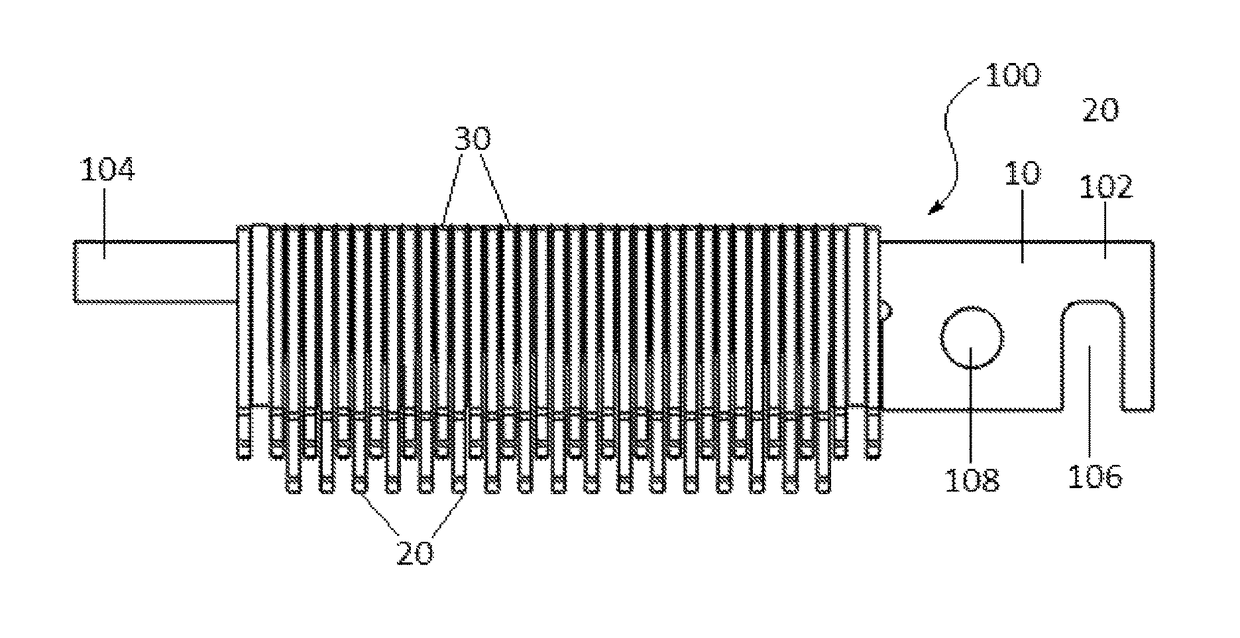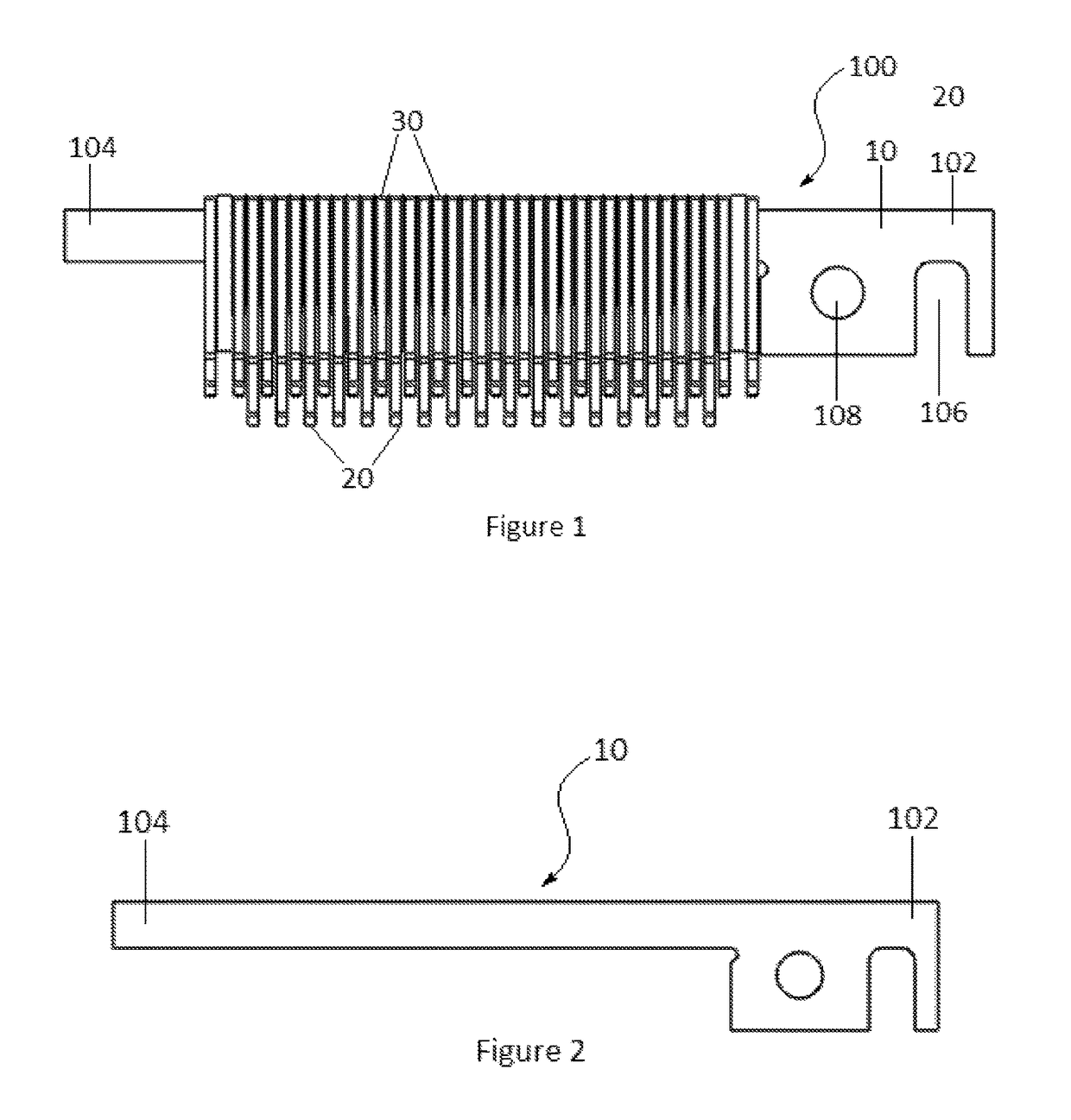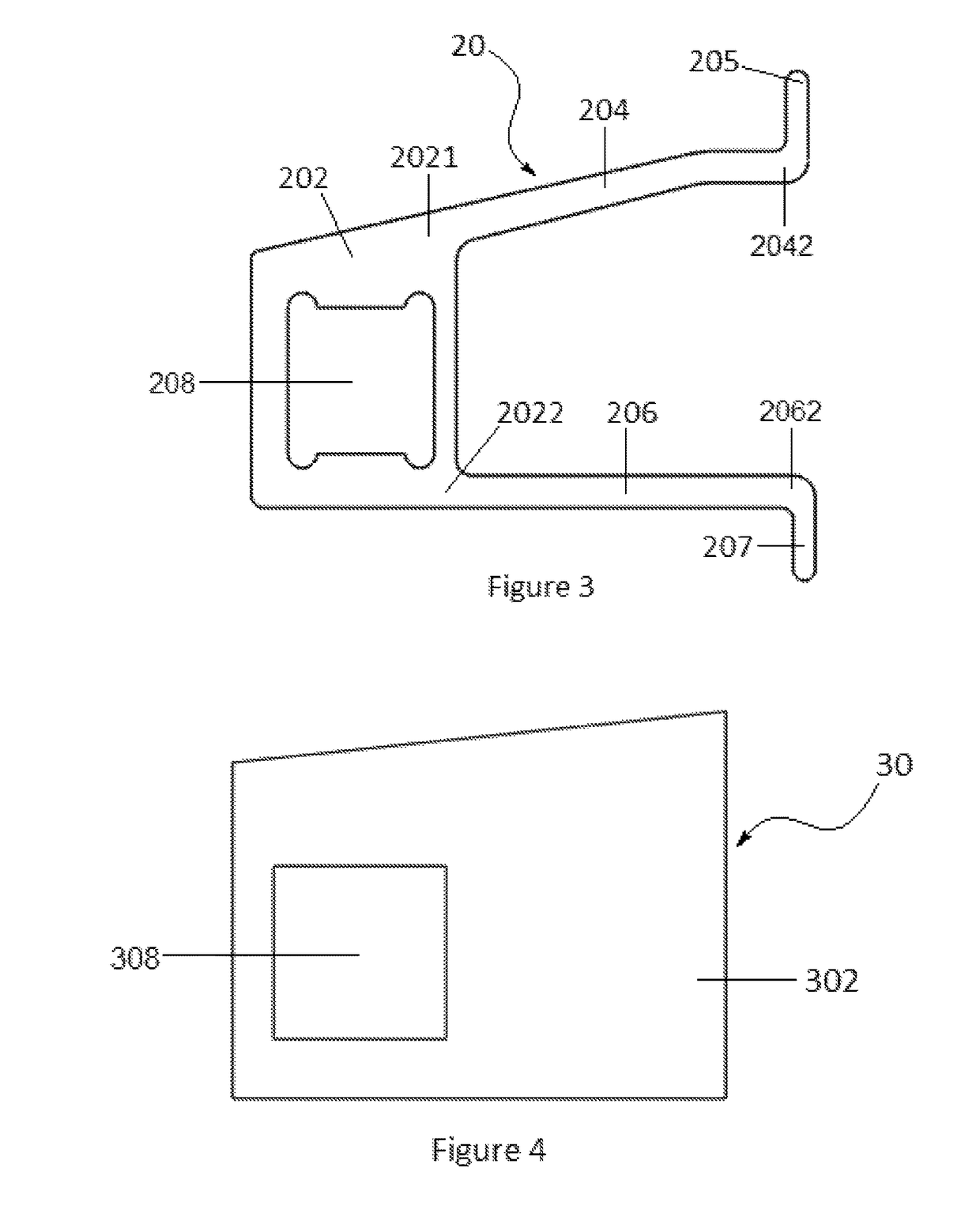Contact assembly in a testing apparatus for integrated circuits
a technology of contact assembly and testing apparatus, applied in the field of electric contacts, can solve the problems of loss/reduction of contact, poor co-planarity, and high temperature of the testing apparatus, and achieve the effects of quick and easy customization, and less effect on the position of contact pins
- Summary
- Abstract
- Description
- Claims
- Application Information
AI Technical Summary
Benefits of technology
Problems solved by technology
Method used
Image
Examples
Embodiment Construction
[0040]It should be noted that the following detailed description is directed to an electrical contact assembly of an integrated circuit (IC) testing apparatus, and is not limited to any particular size or configuration but in fact a multitude of sizes and configurations within the general scope of the following description.
LIST OF NUMBERED ELEMENTS IN FIGURES
[0041]Rigid shaft (10)[0042]Rigid shaft sub-assembly (100)[0043]First end of rigid shaft (102)[0044]Second end of rigid shaft (104)[0045]Notch (106)[0046]Dowel pin through-hole (108)[0047]Contact pin (20)[0048]Contact pin base portion (202)[0049]First side of base portion (2021)[0050]Second side of base portion (2022)[0051]Cantilever arm (204)[0052]Cantilever arm end (2042)[0053]First contact portion (205)[0054]Stationary arm (206)[0055]Stationary arm end (2062)[0056]Second contact portion (207)[0057]Through-opening of contact pin (208)[0058]Electrical insulator (30)[0059]Electrical insulator base portion (302)[0060]Through-open...
PUM
 Login to View More
Login to View More Abstract
Description
Claims
Application Information
 Login to View More
Login to View More - R&D
- Intellectual Property
- Life Sciences
- Materials
- Tech Scout
- Unparalleled Data Quality
- Higher Quality Content
- 60% Fewer Hallucinations
Browse by: Latest US Patents, China's latest patents, Technical Efficacy Thesaurus, Application Domain, Technology Topic, Popular Technical Reports.
© 2025 PatSnap. All rights reserved.Legal|Privacy policy|Modern Slavery Act Transparency Statement|Sitemap|About US| Contact US: help@patsnap.com



